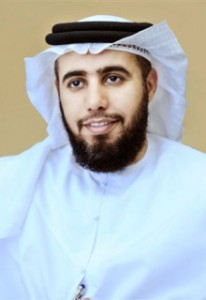Source: www.rta.ae www.dubai-bus.com
In line with its community-based responsibility, the Public Transport Agency has released a number of environmental sustainability initiatives, the aim being to establish frameworks and policies and implement several programs and procedures that can cut short the negative impacts produced by the Agency’s activities, preserve natural resources, minimize bus gaseous emissions as well as manage the wastes resulting from various activities.

Mr. Essa Abdulrahman Al Dosari, CEO of the Public Transport Agency, stated that these initiatives included three axes. The first axis is concerned with the policies and systems of environmental management and mobility programs. The second axis relates to curtailing air emissions from public buses while the third axis involves rationalization of power consumption and preservation of natural resources. The initiatives targeting power consumption rationalization and preservation of natural resources are included in all stages of design, operation, maintenance, waste management and recycling methods.
Al Dosari said, “The first axis involves drawing up general structures and modernizing management systems adopted by the Public Transport Agency to preserve natural resources and protect the environment against the pollution produced as a result of the Agency’s various activities in managing and operating public transport in Dubai Emirate. For this purpose, the Agency has drawn up a general policy that is concerned with the environment conservation and preservation of natural resources. The set policy underlines the broad lines and obligations of the Higher Management, responsibilities, legal frameworks and legislatures relating to the preservation of natural resources, maintenance of public health and conservation of the environment.”
The first axis also involves preparing PTA-EMS-Environmental Management System which identifies the various activities of the Public Transport Agency, methods of curtailing negative impacts arising from pollutants and ways to preserve natural resources, conserve the environment and sustain development. It also identifies the mechanisms of dealing with wastes and emissions resulting from the activities of the Public Transport Agency and environmental pollution protective and mitigating methods in addition to the protection of health of all employees, community and environment against the hazards that may result from the various activities of the Public Transport Agency and adversely and directly or indirectly affect health and environment.
The axis also included the launch of Awselni program initiative to transport and convey the RTA employees from their homes to their workplaces and back. The total journeys carried out through Awselni program in the first half of the current year amounted to about 3,500 journeys delivering about 1,650 passengers/day. The Sharekni program initiative, however, aims to have other passengers sharing vehicle owners during their daily trips from and to their workplaces, the aim being to increase the rate of private vehicle occupancy in the Emirate. Now, there are about 14,000 subscribers registered through the RTA website. This service is being used by more than 1,200 persons per day. The two initiatives have contributed to reducing 85% of the carbon dioxide emission as well as the quantity of hydrocarbons produced through the use of private cars yet maintaining the same normal rate of occupancy in Dubai Emirate.
“The second axis included the efforts made to curb pollutant gaseous emissions resulting from public buses and abras such as sulfur oxides, nitrogen oxides, hydrocarbons and carbon monoxide. For this purpose, seven traditional power operated abras were designed, equipped and operated using low sulfur diesel 50 ppm which is a special fuel known to be one of the purest types of fuel worldwide. The currently used fuel in the local markets has sulfur content of 500 ppm which means that is tens times more than the sulfur content available in the fuel used in RTA’s public buses emitting environment pollutant emissions,” he added.
The second axis also includes the replacement of the public bus fleet with buses that are compatible with the European specifications (Euro IV – Euro V) targeting a maximum K value for the RTA’s public buses to bring down to lower than tenth of the maximum value permissible in the UAE for diesel operated buses and the use of engines fitted with nitrogen oxide emission reducing elements known as Selective Catalyst Reduction – SCR) as well as engines fitted with Exhaust Gas Recirculation (EGR) system.
It is noteworthy that these initiatives caused a drastic reduction of carbon monoxide and hydrocarbon emissions resulting from public transport modes. The quantity of carbon monoxide emission generated from a private vehicles (compliant with the Euro IV standards at best) is almost six times greater than that produced from public buses and two times more compared to the hydrocarbons produced by RTA provided public buses.
The third axis relates to power consumption saving initiatives and maintaining the natural resources in the design, operation, and maintenance stages as well as the means of waste disposal and recycling.
This is reflected in the design of the Water Ferry stations to fit with the standards of green buildings (Golden Category in LEEDs Requirement), restricting of public bus routes, using special power-saving lighting units (LED) in 18 water taxi stations, using electrical power to operate the water taxi a/c while docking at the station in the waiting period instead of using the diesel-powered electric generator in 5 of the Water Taxis, recycling the waste oils of public bus engines through companies licensed in recycling oils, recycling metals & defective batteries, recapping worn out tires in accordance with a strict public safety system & properties and maintaining the quality, and recycling waste water of bus wash at the depots of the Agency.
It is worth-mentioning that work is progressing well in the trial run of CNG-operated abras, launching an initiative for collection of paper, plastics and the fluorescent lighting units for recycling.
















